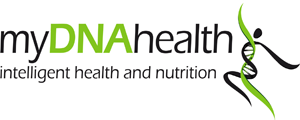Nutrigenomics: Evidence-based approach to health and wellbeing
myDNA adopts a rigorous scientific three-step process called RRA, with each step being a requisite in order to process to the next step.
Relevancy: Comprehensive scientific literature review which covers functional mechanism (transcription cell signalling, gene expression), biological pathways, single nucleotide polymorphisms (SNPs) to understand if coding, non-coding or a regulatory region of the gene and epidemiology.
Reliability: The scientific findings are further scrutinised by the myDNAhealth scientific and genetics team and scored according to biological significance, number of independent studies or papers and groups and population included in the study.
Actionable: myDNA’s scientific and genetics team repeat the process to further scrutinise and score the epigenetics and nutrigenomics evidence i.e. lifestyle and nutrition intervention for gene expression and health.
When the SNP passes the three-step research process, myDNAhealth will commence the laboratory testing phase. This happens in close collaboration with health professionals as part of the feedback testing process.
IN PRACTICE
Is the genetic component for the risk of developing coeliac disease useful for patient-centred care?
Human Leukocyte Antigen (HLA) is the major risk factor in coeliac disease (CD) and up to 95% of patients carry either the HLA-DQ2.5 genetic variant whilst the minority carry HLA-DQ8 or HLA-DQ2.2. The role of these HLA molecules in CD is now understood, whereby they preferentially bind to gluten peptides presenting them to T cells in the gut which initiates a cascade of inflammatory events eventually leading to CD lesions.
myDNAhealth’s scientific literature review covered six papers which confirmed that up to 40% of the European population are positive for HLA-DQ2 or 8 and about 3% go on to be diagnosed which indicates that the HLA genes are useful but not sufficient for disease diagnosis. Because the HLA genotypes do not determine definitive CD, GWAS studies have been performed and have identified another 42 loci which contribute to CD, many of which are associated with other autoimmune conditions. This is the same position myDNAhealth takes regarding autoimmunity, in that the genomics is not yet in place for us to identify a group of SNPs which will definitively define or diagnose CD.
However, risk for developing CD based on HLA genotype can be reported as high, medium or low allowing healthcare practitioners to intervene and help at-risk patients make dietary changes help to reduce this risk factor and prevent CD.




